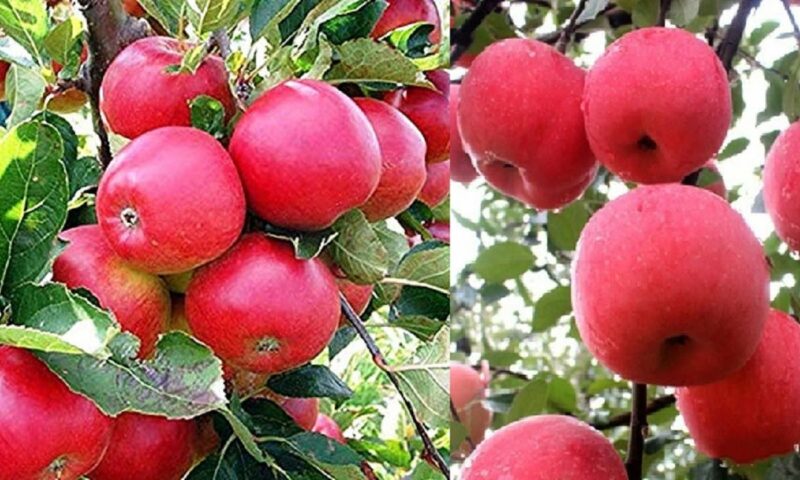By Spy Uganda
Kampala: Apple, a temperate crop, is being cultivated as a cash crop in south-western Ugandan highlands, where farmers are successfully cultivating it.
READ ALSO: New Farming “Ecosystem” In Uganda Empowers Small Holders
According to reports, till recently only a few countries in Africa were known to produce deciduous fruits substantially. But studies show that the consumption of deciduous fruits, especially apples, is increasing in the continent.
Currently, the Uganda government is promoting apple production under the National Agricultural Advisory services programme in the highlands of Kabale, Kisoro and Kanungu districts.
READ ALSO: Pastoral Farming: Traits That Could Boost Livestock Productivity Unearthed
Apples are high-value perennial fruit trees of commercial, nutritional and environmental importance, if included in farming systems. It can help diversify income for farmers and improve their capacity to adapt to climatic extremes affecting the annual crops.
As with most horticultural fruit trees, commercial apple production is both knowledge and labour intensive. Farmers need to know how to manage trees, soil, water and grafting techniques as well as how to tackle pests and diseases. All these require labour and knowledge.
However, the advantage of apples over annual crops is that once established, farmers do not have to replant trees for a long time. The cost of tree establishment is a one-off, but management is a continuous process.
READ ALSO: Pastoral Farming: Traits That Could Boost Livestock Productivity Unearthed
Another challenge is that many farmers are struggling to commercialise apple crops due to poor quality. The local varieties are less preferred at markets, as they are poor in taste. Hence, they are not able to compete with imported fruits.
Planting Tree In Ground
Many gardeners dream of growing their own juicy apples. However, growing fruit takes long-term commitment—from pruning apple trees for good form to pest control—for success. Here is what experts say about planting the apple.
READ ALSO:Farmers Guide With Mugenyi Joseph: Pest Management In Bananas
- Before planting, remove all weeds and the grass in a 4-foot diameter circle.
- After you purchase the tree, protect it from injury, drying out, freezing, or overheating. If the roots have dried out, soak them in water about 24 hours before planting.
- Tree spacing is influenced by rootstock, soil fertility, and pruning. Seedlings or full-size trees should be planted about 15 to 18 feet apart in a row. A dwarfing rootstock might be 4 to 8 feet apart in a row. Of course, apple trees require cross-pollination; a different cultivar that blooms at the same time must be planted within 2,000 feet (preferably, nearer).
- Dig a hole approximately twice the diameter of the root system and 2 feet deep. Place some of the loose soil back into the hole and loosen the soil on the walls of the planting hole so the roots can easily penetrate the soil. Spread the tree roots on the loose soil, making sure they are not twisted or crowded in the hole. Continue to replace soil around the roots. As you begin to cover the roots, firm the soil to be sure it surrounds the roots and to remove air pockets.
- Do not add fertilizer at planting time, as the roots can be “burned”. Fill the remainder of the hole with the loose soil, and press the soil down well.
- Most apple trees are grafted. The graft union must be at least 2 inches above the soil line so that roots do not emerge from the scion. The graft union (where the scion is attached to the rootstock) can be recognized by the swelling at the junction.
- Dwarf apple trees are notoriously prone to uprooting under the weight of a heavy crop, so you should provide a support system for your hedge. You can grow your trees against a fence, or you can provide free-standing support in the form of a trellis.




